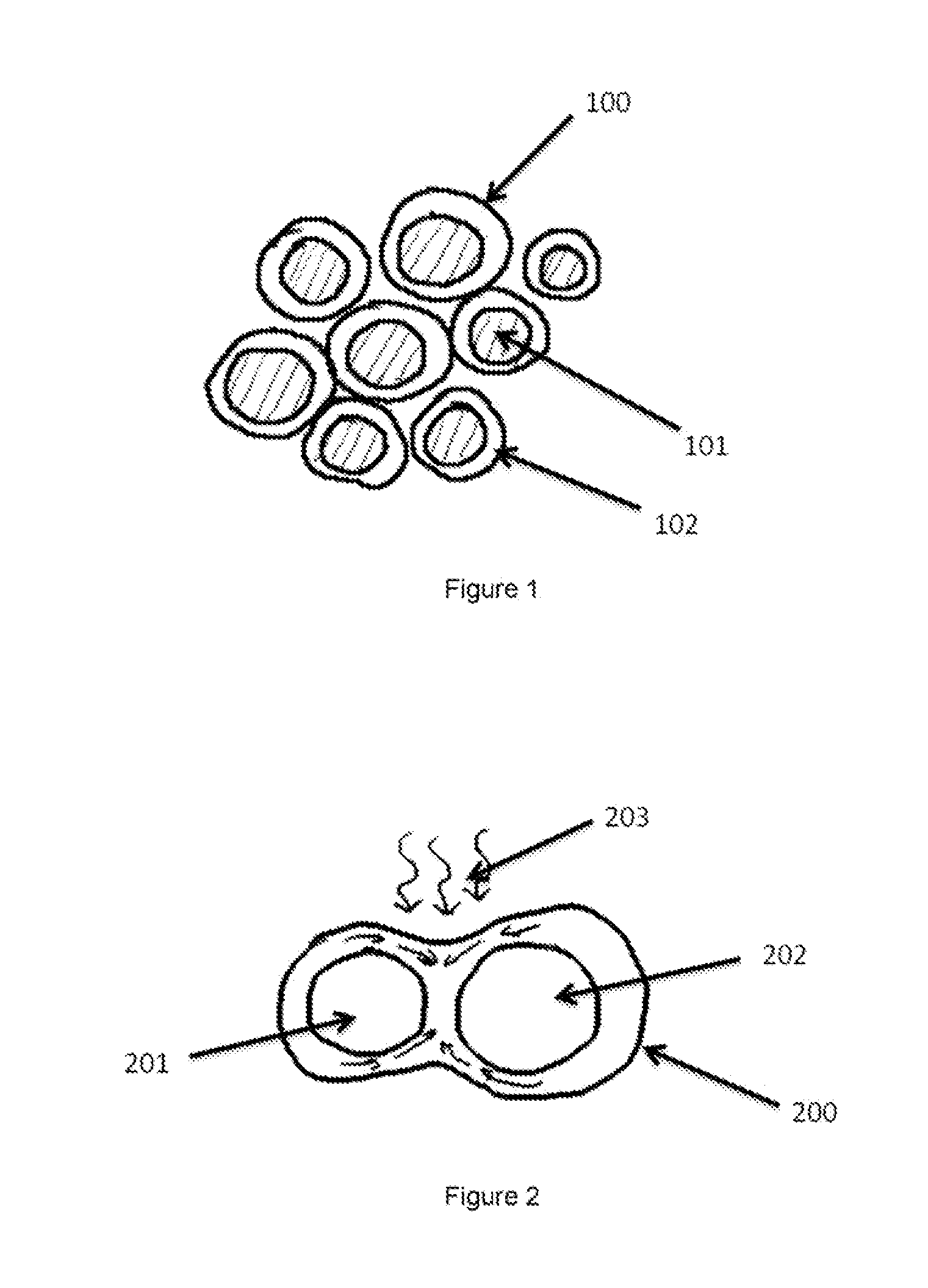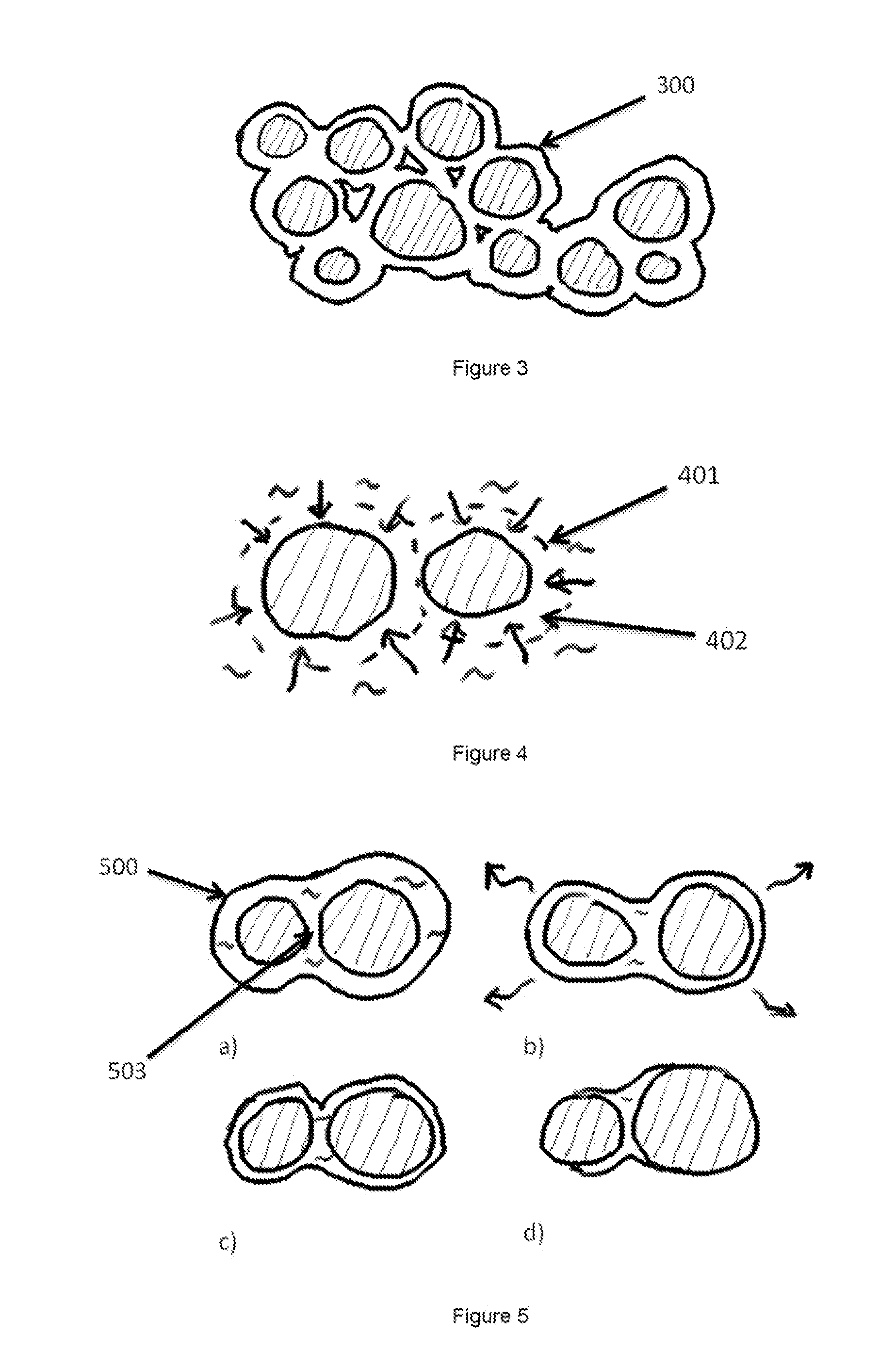3D multi-stage method
a 3d printing and multi-stage technology, applied in the field of multi-stage 3d printing methods, can solve the problems of inability to achieve the solidification described in the prior art, damage to the molded parts, and process-incompatible distortion of the present layer
- Summary
- Abstract
- Description
- Claims
- Application Information
AI Technical Summary
Benefits of technology
Problems solved by technology
Method used
Image
Examples
example 1
[0071]A Croning sand of the Húttenes-Albertus RFS 5000 type is used in a layering process. For this purpose, the sand is deposited onto a build plane in a 0.2-mm layer. With the aid of a drop-on-demand print head, the sand is subsequently printed with a solution of isopropyl alcohol according to the cross-sectional surface of the desired object in such a way that approximately 10 wt % is introduced into the printed areas. The build plane is then shifted relative to the layering mechanism by the thickness of the layer, and the operation comprising the layer application and printing starts again. This cycle is repeated until the desired component is printed. The entire operation is carried out under normal conditions. The temperature in the process room should be between 18° C. and 28° C., preferably between 20° C. and 24° C.
[0072]Approximately 24 hours must pass before the final layers of sand have developed an adequate strength. The component may then be unpacked, i.e., removed from...
example 2
[0075]A layering process is carried out in a manner similar to the first example. A Croning sand of the Húttenes-Albertus CLS-55 type is used in this case. For this purpose, the sand is again deposited onto a build plane in a 0.2-mm layer. A solution of 15% Corrodur from Húttenes-Albertus, 42.5% ethanol and 42.5% isopropyl alcohol is used as the printing fluid.
[0076]Approximately 10 wt % of fluid is printed onto the sand.
[0077]The flexural strength after unpacking the molded body and completing this first method step, which is also referred to as the presolidification step, is 140 N / cm2 in this case. The final flexural strength after the second method step, which is also referred to as the final solidification step, is again 800 N / cm2.
example 3
[0078]The process for this preferred manufacturing method is carried out in a manner similar to the previous examples. In this case, strengths of 800 N / cm2 are achieved using untreated sand as the base. A mixture of 50% Corrodur and 50% dioxolane is used as the binder fluid. 10 wt % are printed. The process takes place at room temperature. The component does not have to be unpacked from the particulate material after printing, since the unencased material cannot be bound by means of thermal energy. Either the entire box or, for example, one printed box may be introduced into the oven to carry out the final solidification step. A sand volume of 8×8×20 cm, which contains a bending test body, is heat-treated in the oven for 24 hours at a temperature of 150°. The strength upon conclusion of the final solidification step is approximately 800 N / cm2. A determination of the organic proportion by means of ignition loss determination demonstrates 5 wt %. The material in this case corresponds ...
PUM
| Property | Measurement | Unit |
|---|---|---|
| Temperature | aaaaa | aaaaa |
| Temperature | aaaaa | aaaaa |
| Temperature | aaaaa | aaaaa |
Abstract
Description
Claims
Application Information
 Login to View More
Login to View More - R&D
- Intellectual Property
- Life Sciences
- Materials
- Tech Scout
- Unparalleled Data Quality
- Higher Quality Content
- 60% Fewer Hallucinations
Browse by: Latest US Patents, China's latest patents, Technical Efficacy Thesaurus, Application Domain, Technology Topic, Popular Technical Reports.
© 2025 PatSnap. All rights reserved.Legal|Privacy policy|Modern Slavery Act Transparency Statement|Sitemap|About US| Contact US: help@patsnap.com


